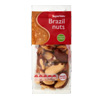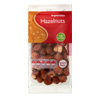Lactose Intolerance
Lactose intolerance is one of the more common food intolerances. Worldwide, it is thought that about 35% of people are unable to tolerate lactose.

Lactose intolerance is one of the more common food intolerances.Worldwide,it is thought that about 35% of people are unable to tolerate lactose.However, North Europeans, including Irish people, have a much higher tolerance for lactose, so only about 5% of Irish people are thought to be lactose intolerant.
What is Lactose Intolerance?
Lactose is a type of sugar found in milk.It is found in cow’s milk as well as sheep’s, goat’s and other animal milks.When you drink milk or eat foods like cheese that have lactose, your body uses an enzyme called lactase to help you to digest it. Lactase breaks down lactose so that your body can absorb it.When someone is lactose intolerant, it means that their body does not make enough lactase to break down the lactose.The undigested lactose then passes through their small bowel,into their large bowel where their bacteria ferment it.When bacteria ferment lactose, they produce lots of gas and fatty acids.This leads to bloating, wind, diarrhoea, loose bowel movements and stomach cramps.
Types of Lactose Intolerance
Some people do not make any lactase or do not make enough lactase to be able to digest lactose.This is known as primary lactose intolerance.
Some people develop temporary lactose intolerance if their bowel becomes damaged for some other reason.People who are diagnosed with coeliac disease, which damages the lining of the bowel, may find that they are lactose intolerant as well for the first few months after diagnosis.As they follow the gluten free diet, the damage to their bowel heals, and they can usually start to eat foods that have lactose again without any problems.This type of lactose intolerance is called ‘secondary lactose intolerance’.
How can I test for Lactose Intolerance?
If you think you may have a lactose intolerance it is very important to speak to your GP.Many of the symptoms of lactose intolerance can be caused by other problems so you need to rule these out.Your GP can arrange for you to have some tests to see if you are lactose intolerant or she can refer you to a Dietitian for an elimination diet.
What is the Treatment for Lactose Intolerance?
The only treatment is to avoid lactose! This means avoiding all dairy foods and foods that have dairy ingredients.You do need to see a qualified dietitian as dairy is a major source of calcium in the Irish diet and it can be difficult to make up the calcium from other foods.Dairy is also a source of B12 and other nutrients so it is important that you do not miss out on key nutrients.Lactose can turn up in a variety of unexpected foods such as biscuits and bread.Getting some good advice from the start will help you to manage your lactose intolerance.
| Calcium in food | We need per 800mg day |
| 200mls Full fat milk | 240mg |
| 200mls Calcium-enriched Soya milk | 188mg |
| 1 Pot Yoghurt | 250mg |
| 100g Almonds | 240mg |
| 100g Brazil Nuts | 170mg |
| 100g Hazelnuts | 140mg |
| 1 tablespoon Sesame Seeds | 160mg |
Did you know?
Although we often hear that green vegetables are a good source of calcium, they actually do not have a lot of calcium.A 100g serving of cooked broccoli has 40mg of calcium – this means you would need to eat 20 servings of broccoli a day to get all of the calcium you need.
 SuperValu Brazil Nuts 150g
SuperValu Brazil Nuts 150g
SuperValu Brazil Nuts 150g
 SuperValu Hazelnuts 70g
SuperValu Hazelnuts 70g
SuperValu Hazelnuts 70g